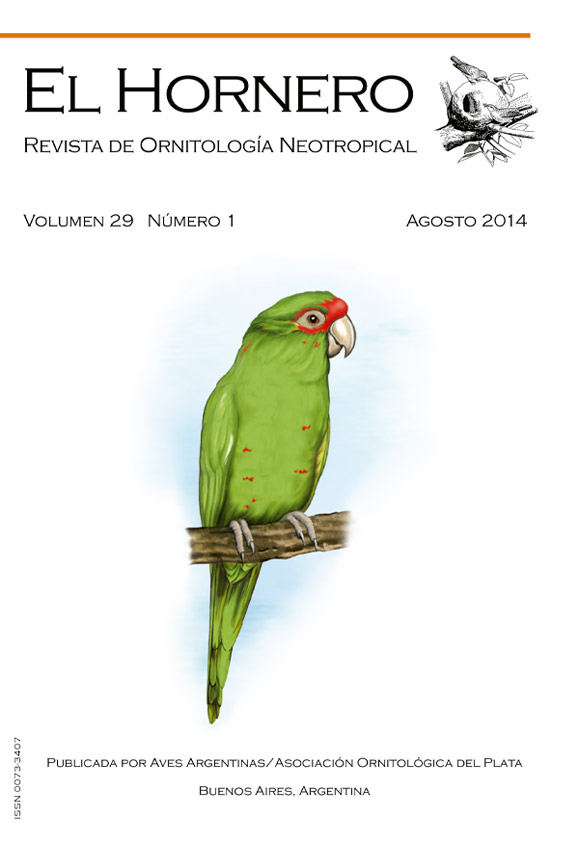Abstract
Nest structure and location must maximize the benefit provided to chicks through isolation from the environment as well as protection against predators. The Yellow-winged Blackbird (Agelasticus thilius) builds open nests intertwined to trowel vegetation in marshlands. The height to which these birds build the nest and the thickness of their lateral walls and base were studied to look for a pattern that relates these characteristics. Nests were built in the lower half of bulrush canes and a positive correlation between height of canes and the distance between the nest and the cane tip was found. The thickness of both nest wall and base increased with the distance between the nest and the cane tip. This could reinforce nest structure improving its resistance to the effect of the wind without damage. Wall thickness was higher in nests built at a lower height, but base thickness was not correlated with this distance. Environmental factors that test the strength of the nest structure may be important in determining nest structure and location, while the influence of predation risk would be lower.
References
CIRNE MP Y LÓPEZ-IBORRA G (2005) Breeding biologyof Chestnut-capped Blackbirds in rice paddies in south-ern Brazil. Journal of Field Ornithology 76:411–416
CODY ML (1985) An introduction to habitat selectionin birds. Pp. 3–56 en: CODY ML (ed) Habitat selectionin birds. Academic Press, Orlando
FRAGA RM (2011) Family Icteridae (New World black-birds). Pp. 684–807 en: DEL HOYO J, ELLIOTT A YCHRISTIE DA (eds) Handbook of the birds of the world.Volume 16. Tanagers to New World blackbirds. LynxEdicions, Barcelona
LACK D (1972) Ecological adaptation for breeding in birds.Chapman and Hall, Londres
LONG AM, JENSEN WE Y WITH KA (2009) Orientationof Grasshopper Sparrow and Eastern Meadowlarknests in relation to wind direction. Auk 111:395–399

This work is licensed under a Creative Commons Attribution-NonCommercial 4.0 International License.





